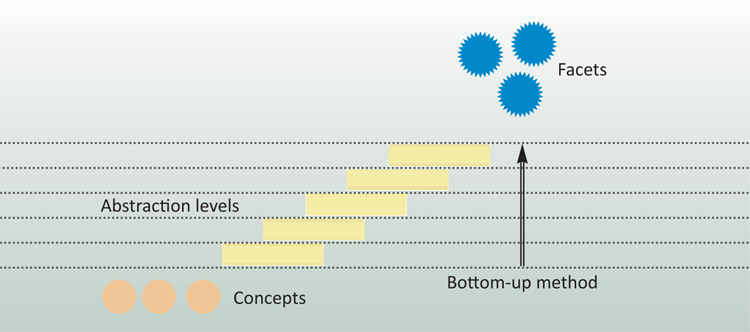Faceted classification is a way of categorizing concepts in broader, mutually exclusive categories, based on shared characteristics. These broader categories are called facets. The facets can be thought of as different axes along which objects and documents can be classified, with each facet containing a number of terms that belong to the same category. Facets thus provide a subdivision of concepts through the reduction of the composite concepts to more abstract ones. They are primitive ideas, which build multidimensional conceptual structures and are fundamental for the classification of terms derived from different domains of discourse. Faceted classification is built form 'the bottom up' on the basis of a detailed examination of the concepts in a given discipline or subject field. Concepts are assigned to a series of categories that are hierarchically organised (The IsA relationasihip). The hierarchies that result from this kind of classification are not arbitrary, but reveal the substantive properties of a concept and bring to light the “multiple links” between the terms.
Relationships between concepts in a facet, and between the facets themselves, are established, and the rules for combination are derived from the structure, within the conventions and needs of the particular discipline. Thus, faceted classification prevents the logical errors and the idiosyncratic decisions that are responsible for major incompatibilities when building hierarchies.
In the time span from 1925 to 1965 S. R. Ranganathan developed a system of library classification, which is called colon classification system. It constitutes the invention of the faceted classification. It uses five primary categories, or facets, to further specify the sorting of a publication. According to Ranganathan these categories are: Personality, Matter, Energy, Space and Time. Collectively, they are called PMEST. Today faceted classification is used not only in library science but also in the fields of knowledge organization and information retrieval in general.






